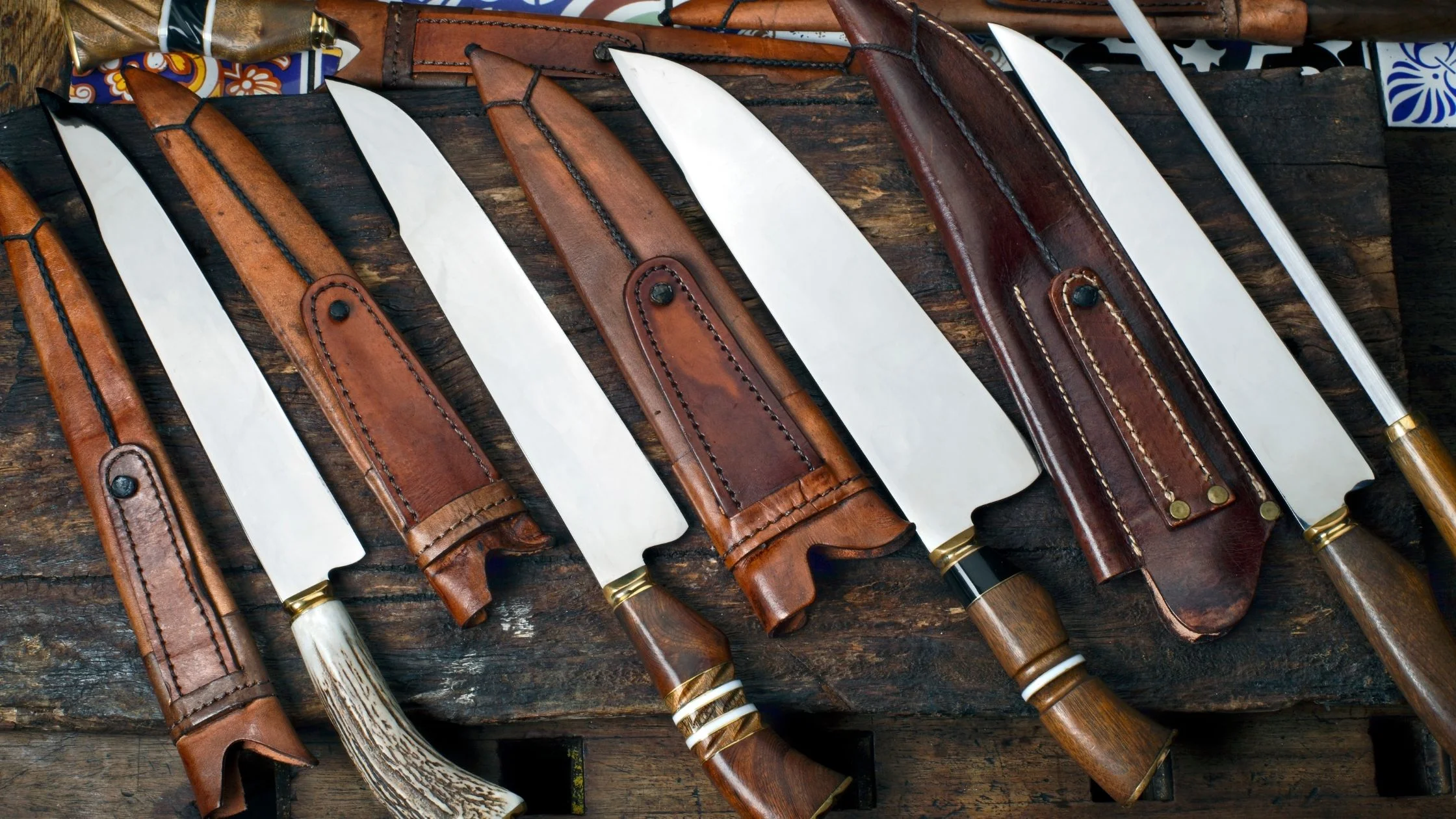Looking for Types of Garden Knives?
Soil, seed, sun, and water are the basics required to begin gardening. However, gardening is hard work that can be done more efficiently with the right tools, such as a knife, in hand. Different types of garden knives are used for cutting, trimming, weeding, transplanting, and dividing plants, making them one of the important gardening tools.
Types of Garden Knives
Owning a quality garden knife for digging, edging, pruning, planting, spraying, and lawn care is important. Here are some of the most popular types of garden knives that can make gardening easy and enjoyable:
Hori Hori Garden Knife

The hori hori knife is one of the most well-known types of garden knives with outstanding digging and cutting capabilities. It is a Japanese knife that can be used to effectively dig, saw, cut, transplant, and measure soil depth for planting bulbs.
A hori hori typically has a slightly curved blade that ends in a point, with one smooth side and one serrated side. The blades of these knives usually have marked measurements that allow you to figure out the depth of the soil while digging.
Opinel Garden Knife

This knife was invented by Joseph Opinel in 1890. Its lightweight, spear point blade, and tapered handle make it a versatile tool for gardeners.
An Opinel knife is a good choice for picking, sawing, pruning, weeding, grafting, and harvesting in your garden. It is essentially a pocket knife that is convenient to maintain. You can buy an Opinel knife for under $20. Its stainless steel blade is rust-resistant and the locking ring secures the blade while open or close.
Full Tang
Tang of the knife is exposed and unsharpened portion of the blade that runs towards the handle. A full tang knife has a solid metal blade that extends towards the handle as well.
This structure allows you to apply a stronger force to the blade without having the knife snap at the bolster, which is the part where the blade meets the handle. A full tang knife is able to withstand heavy-duty gardening tasks as the handle feels securely linked to the blade.
Half Tang
This type of knife has a tang that extends to only part of the length of the handle. While this knife is more affordable as compared to a full tang knife, it is not as strong.
Due to the nature of its structure, a half tang knife is prone to snapping when extra force is applied. Nevertheless, these knives are handier than full tang knives as they are lightweight. The blades are also suitable for knives that have exchangeable blades.
Patio Knife
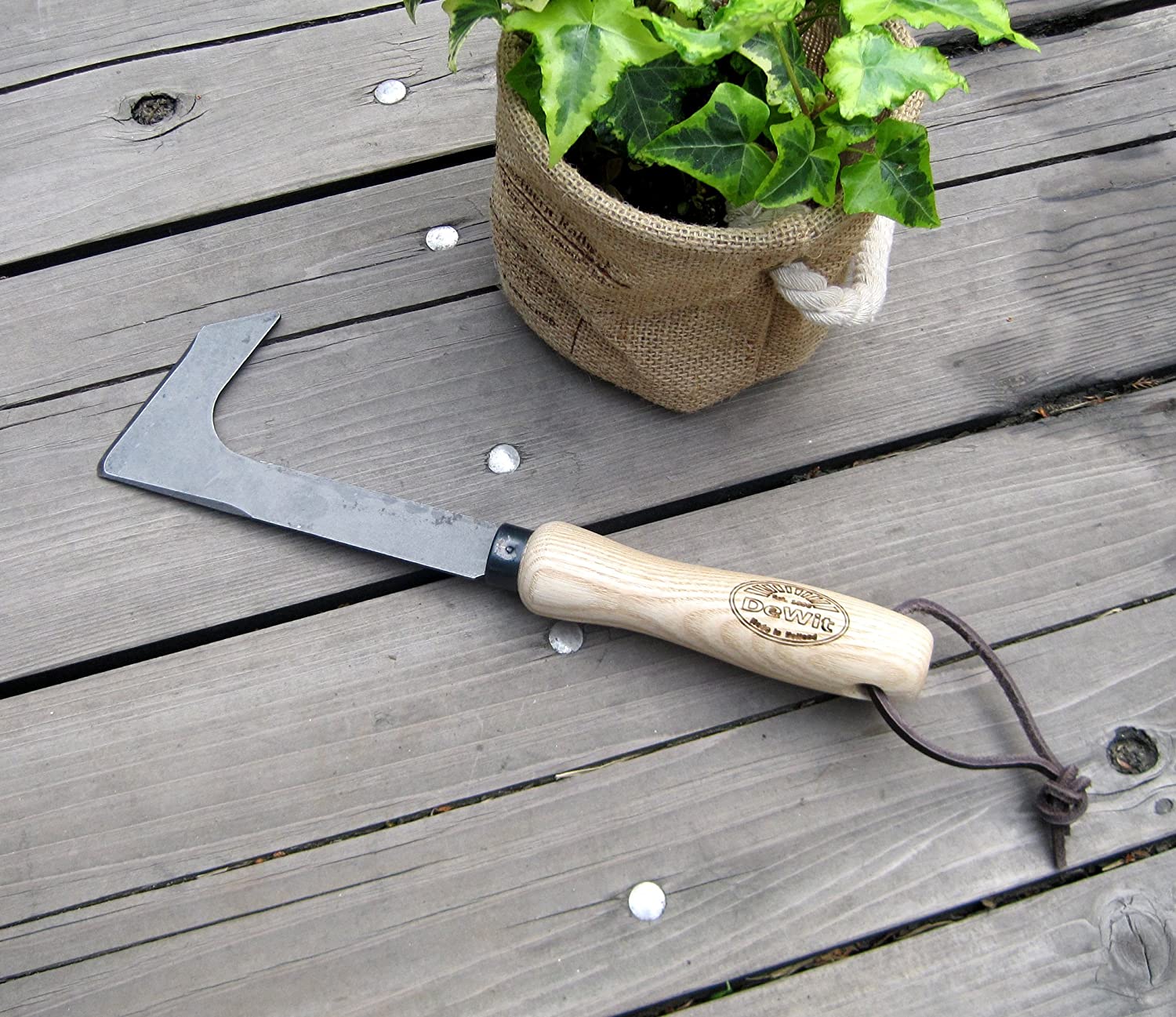
One of the most important garden knives is a patio knife, typically made of carbon steel and oiled ash. Patio pavers are usually positioned close together, but grass and weeds often make their way between the gaps. A patio knife is designed to remove them along with little pebbles and stones.
You can use a patio knife for digging and cutting weeds, roots, and other unnecessary items. Both short-handled and long-handled patio weeders are available on the market.
Short-handled ones are bent at a 90-degree angle, with the hook side designed to clean beveled edges. A long-handled knife, on the other hand, resembles a golf club and can be used without much bending.
Soil Knife
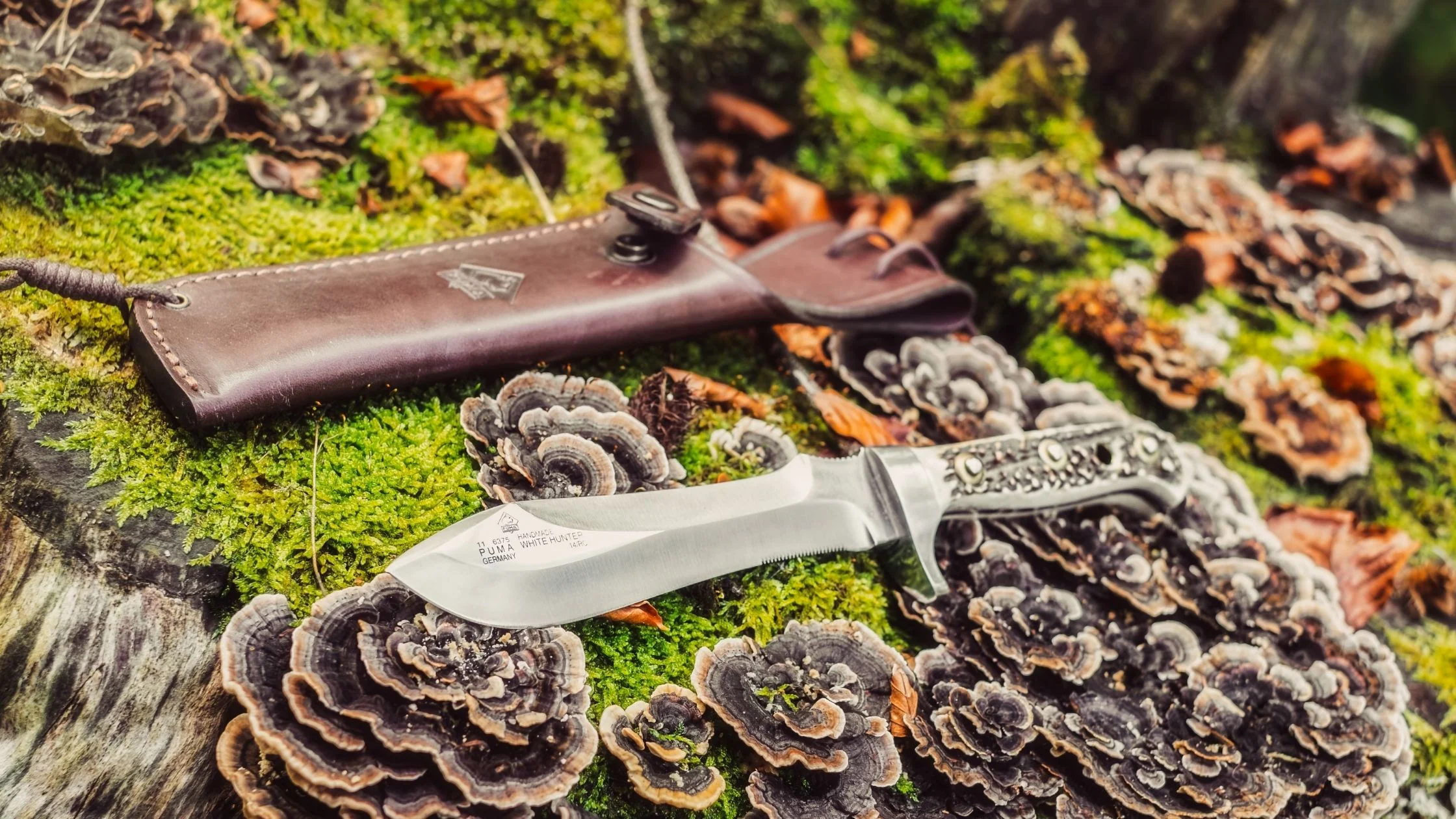
A soil knife is a multifaceted garden tool that can replace the need for scissors, saw, trowel and weeder. You can use it to divide plants, plant bulbs, herbs, flowers, remove rocks, get rid of weeds, trim twines, clean out cracks, and saw through roots
A soil knife is usually created from stainless steel that is designed to tolerate substantial pressure. The steel blade has a tapered slicing-edge on one side and a deeply serrated edge on the other side. Get a sheath that can be attached to your belt in order to easily carry a soil knife around in your garden.
Harvesting and Asparagus Knife
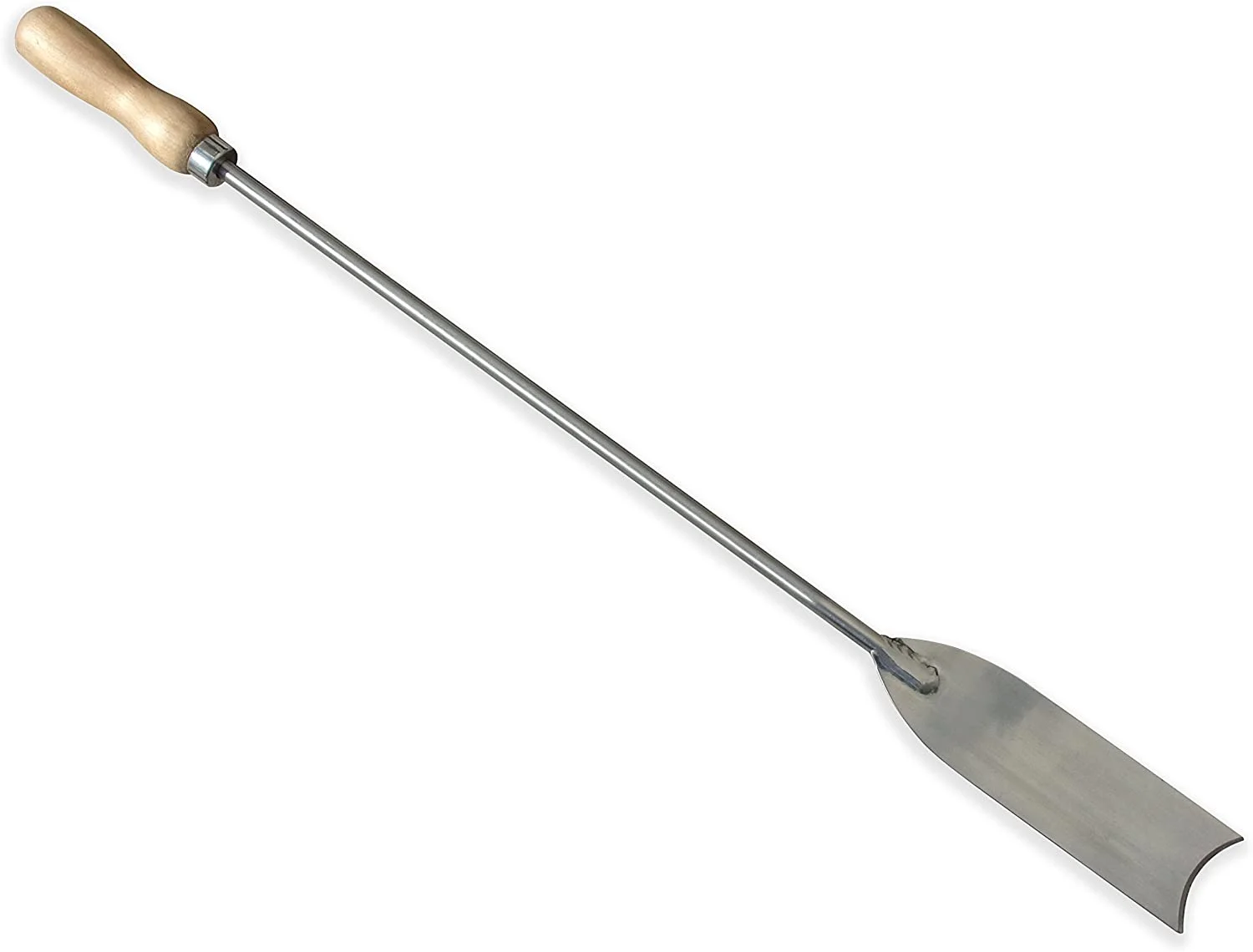
Asparagus is a commonly grown vegetable in gardens. You can buy a specialized knife for harvesting asparagus for the best results.
In order to harvest, you have to make the cut just beneath the soil line, which is why this knife has a thick steel blade that is honed to help you cut through the soil. The serrated edge helps you slice through the base of the asparagus effortlessly.
Bush Hook

A bush hook usually features a heavy curved blade and a wound leather handle. The handle provides excellent grip even when it is wet. A bush hook is mainly designed for dense patches of undergrowth.
The carbon steel blades of this knife are highly sharp and double-edged to allow cutting in both directions. Use it like an ax and cut on the ‘pull stroke’ to use a bush hook effectively.
Pruning Knife
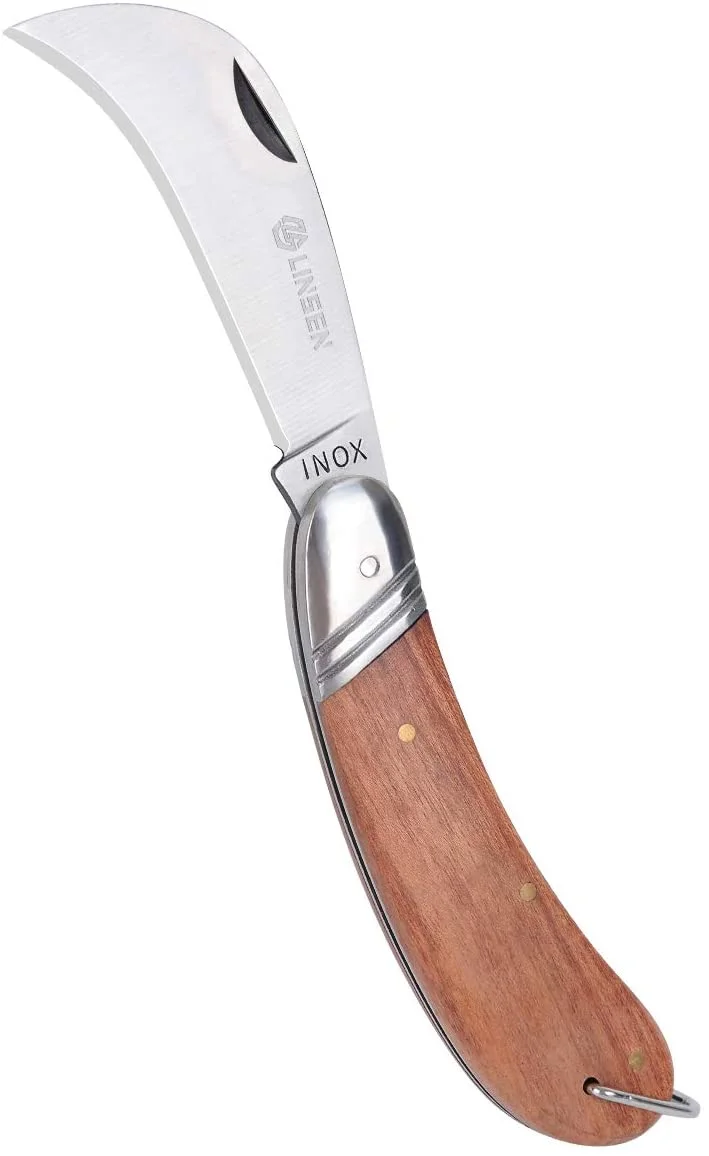
A pruning knife is a gardening essential that is used for a variety of purposes. Some pruning knives are single-piece, while others a foldable.
When you use a pruning knife, it is crucial to remember that the motion should take the blade in the opposite direction to your body. Exert pressure on the stem or vine so that it is taut, and then perform a sharp, slicing motion to cut.
Grafting Knife

These knives typically have a fine blade and a straight edge that is needed to make straight cuts. A good grafting knife has heat-treated blades to develop hardness and hold an edge.
Most of these knives are compact and resemble Swiss pocket knives. You can use a grafting knife for grafting, pruning, budding, and even trimming small twigs and bushes. The blades are generally razor-sharp and durable. A grafting knife is not likely to open up accidentally, so it is safe to carry in your pocket.
Garden Scalpel

Scalpels usually have a carbon steel blade and are great for making precision cuts. Make sure you buy a sterile one so that they are not vulnerable to outdoor hazards like pests and fungus.
Scalpels are commonly used for pruning, cutting, and cloning. They can cut through plant stems easily without damaging them. It can also cut through different materials such as plastic paper, fabric, and thin metal. If you have a small garden, a scalpel would prove to be a rather useful accessory.
Types of Garden Tools
If you are a beginner, you may be overwhelmed with the wide variety of tools available on the market. In this section, we present an overview of the most common types of gardening tools and their uses:
Garden Gloves

Gloves may be underrated but they are crucial for protecting you from thorns and splinters. Make sure the gloves you choose are durable and lightweight, especially while working with seeds or seedlings.
Moreover, your gloves should fit properly as an ill-fitting pair can lead to blisters or mishaps from slipping off. It is best to opt for water-resistant and breathable gloves as they maximize comfort.
Hand Trowel
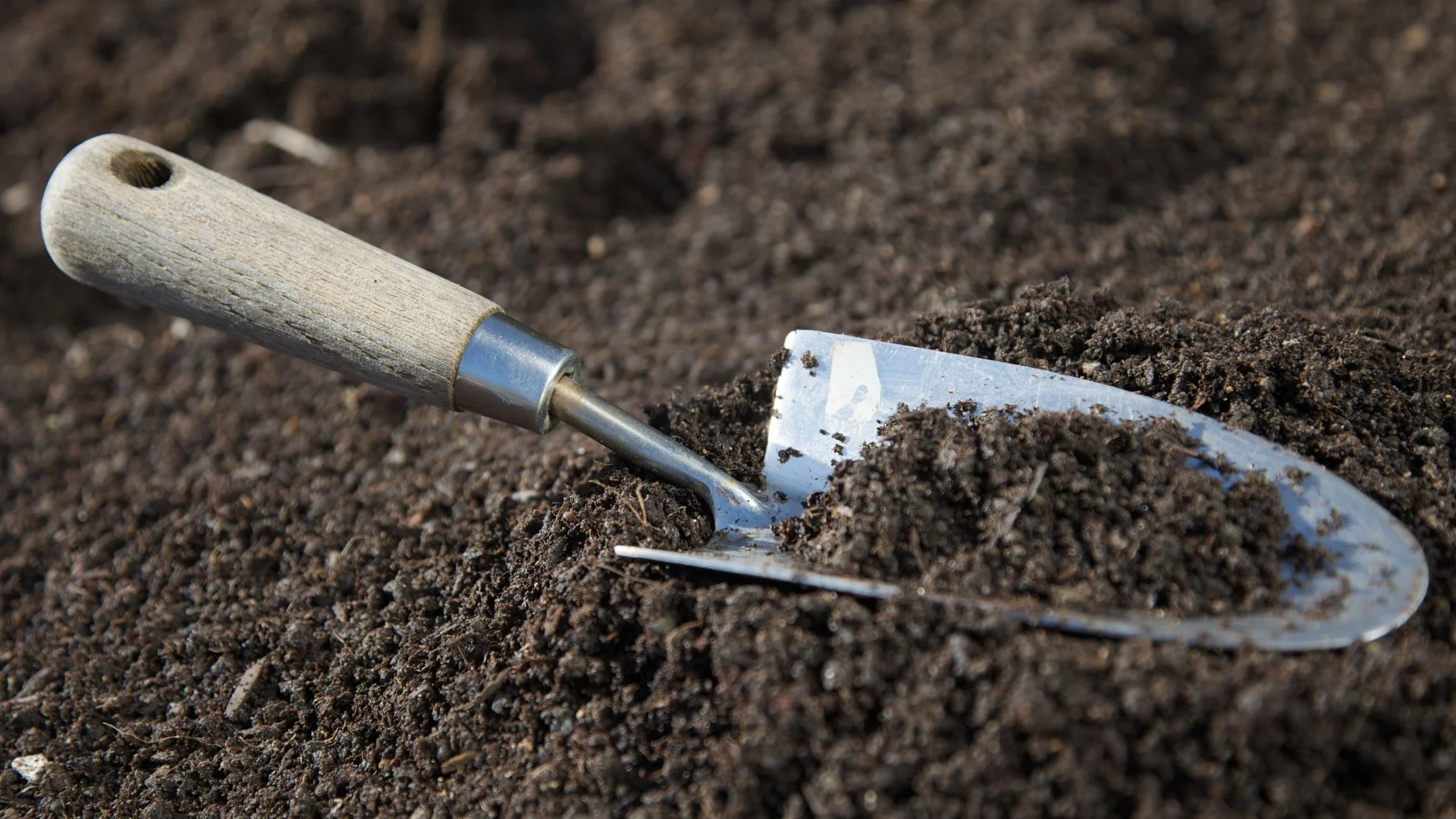
A hand trowel is useful for planting, transplanting, and potting. Select the one in which the blade and handle are firmly attached and the grip on the handle is comfortable to prevent hand fatigue.
A hand trowel with a broad blade is the right choice for moving the soil while one with a narrow blade is more suitable for digging up weeds. Trowels made from stainless steel are ideal as they are more durable.
Garden Knife

A lightweight garden knife with a sound grip is a must-have tool. You can use the knife to saw through roots, dig weeds, and use the tip of the blade to make lines into the soil.
Garden knives can be made from either carbon steel or stainless steel. The lightweight carbon steel knife with a wooden grip is one of the best varieties of garden knives available.
Garden Fork
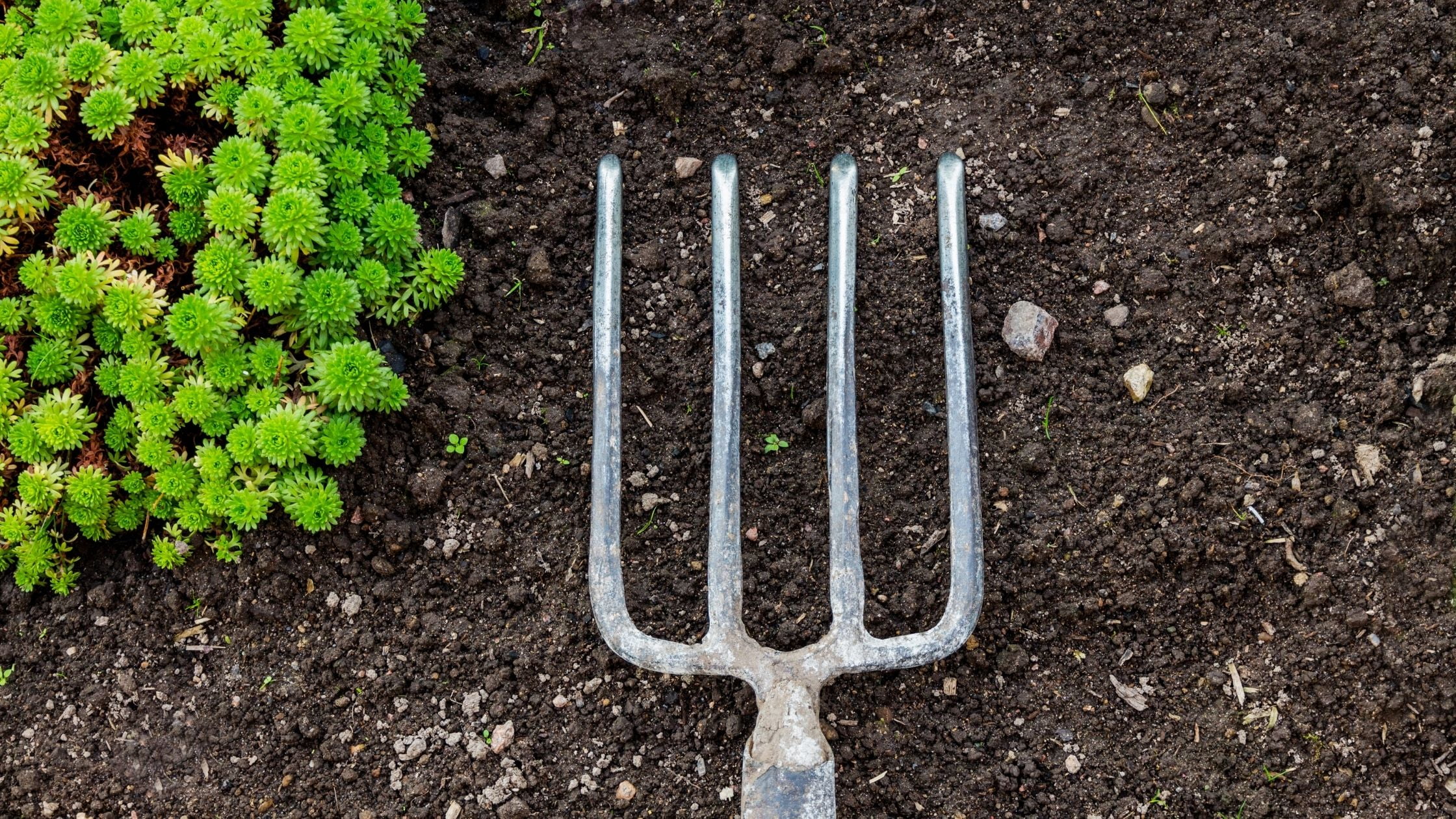
A garden fork is a multipurpose tool that is used to form holes for seeds, break up the soil, get rid of stones and weeds, soften the ground, and mix soil treatment. As it has sharp and tough lines, it can penetrate the soil more easily than a spade.
Forks (Types of Forks) with a slightly curved spine are great for lifting mulch and turning compost miles. Straight-lined forks are more suitable for digging and are best for rocky, compacted, or clay soils.
Spade
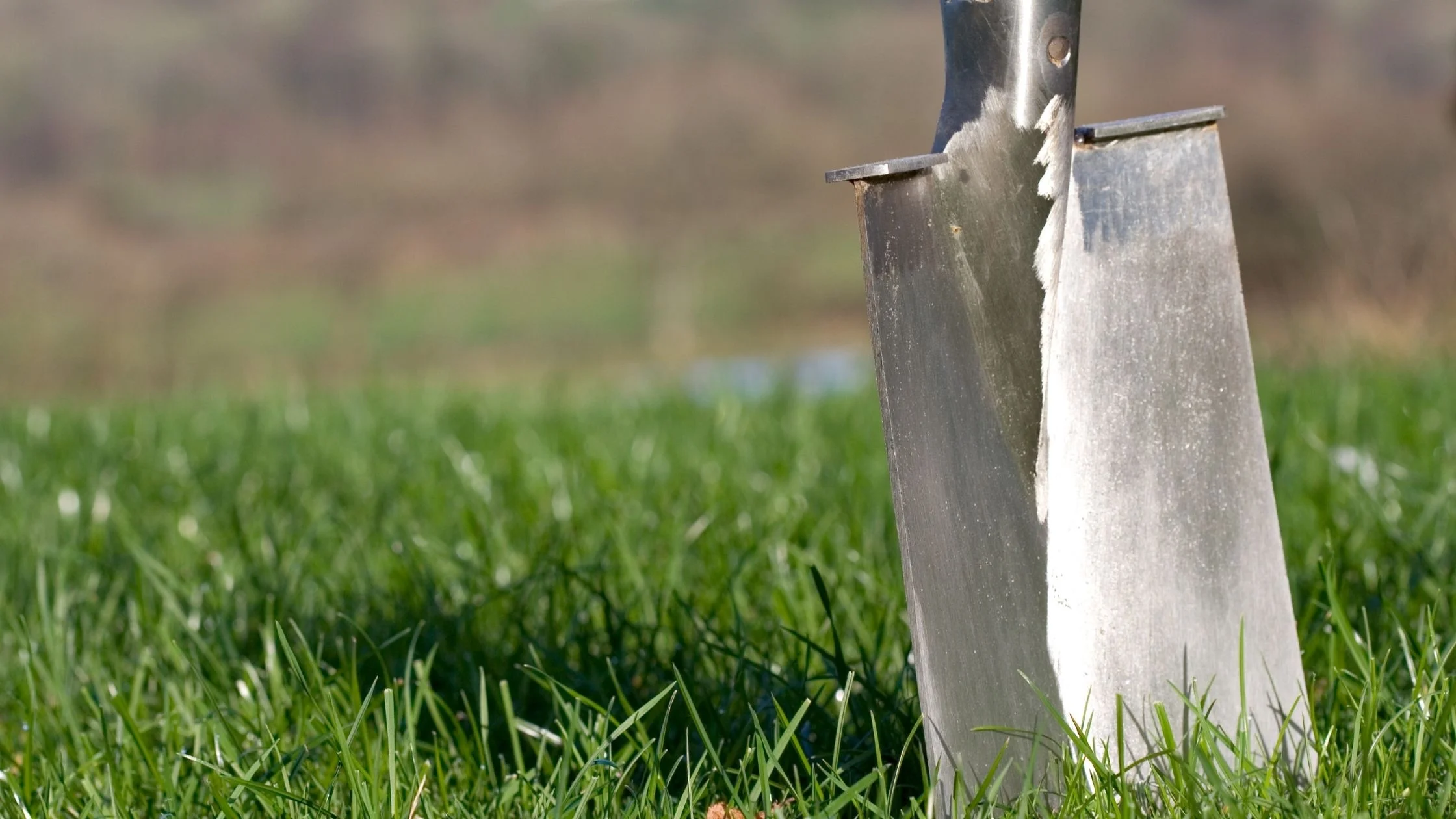
A spade features a long handle and a narrow, long, and flathead. It is used for a variety of gardening tasks such as digging, transplanting, edging beds and lawns, trenching, and dividing shrubs.
A good spade can be expensive, but can easily last you a lifetime. The treads atop the blade provide a robust and comfortable foot surface when an extra push is required. If you are looking for a durable and shock-absorbing spade, choose one with an ash hardwood handle.
Final Thoughts on Types of Garden Knives
You need several different types of tools and equipment in order to make gardening convenient and enjoyable. Using gardening equipment, such as garden knives, hand trowels, gloves, spades, and garden forks, can facilitate you with planning your garden, planting seeds, dividing plants, and harvesting.
Different types of garden knives are necessary in order to achieve tasks that are impossible to do with your hands alone, such as cutting stems, weeding, and pruning. Whether your garden is compact or large, make sure you have the required knives in your arsenal before you begin gardening.

